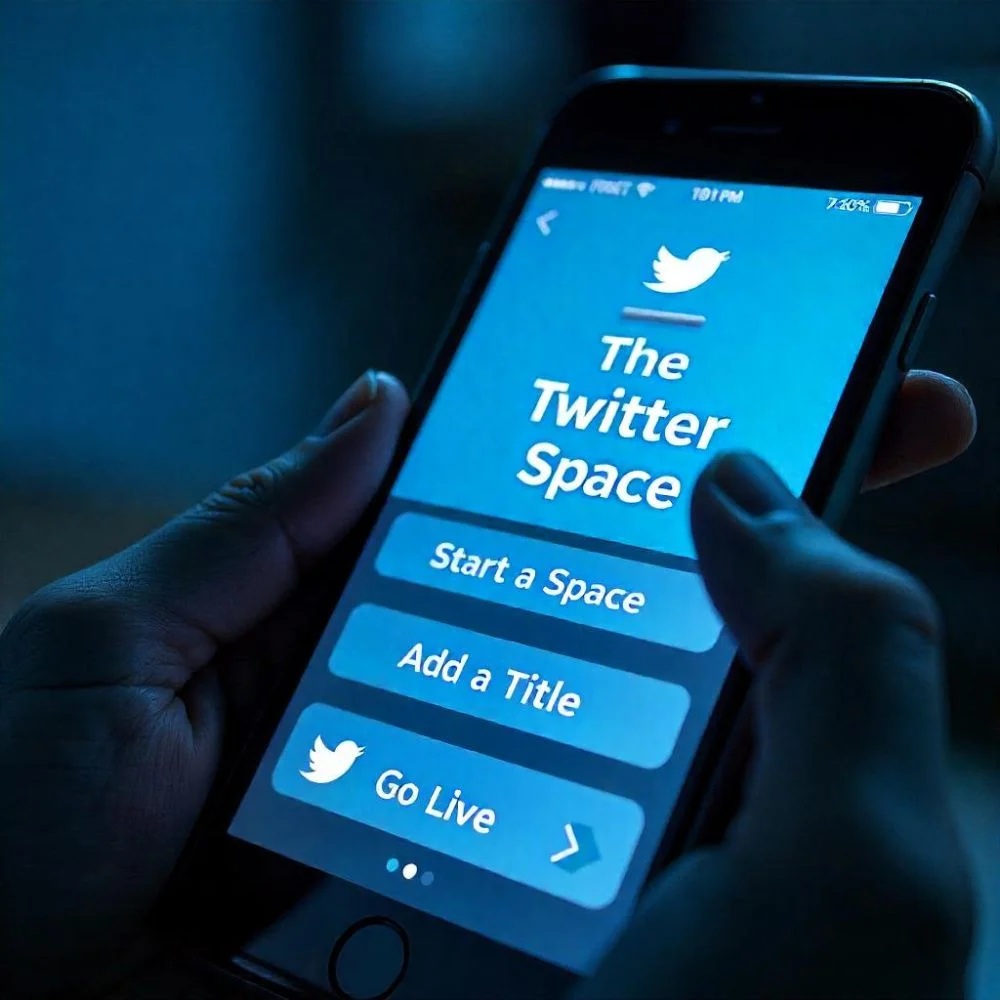Table of Contents
If you use Twitter, you may have seen something called Twitter Spaces. It’s a feature where people can talk live, using their voice, in a kind of audio room. Think of it like a live radio show, but made for social media. You can join, listen, talk, or even host your chat.
What is Twitter Spaces?
Twitter Spaces is a feature on Twitter that lets people have live audio conversations. You don’t need to type. You just speak, listen, and join the discussion in real time. It’s like a voice-only group chat that anyone on Twitter can join, depending on privacy settings.
It works on the Twitter app, and now you can even access it from a desktop browser.
Why Twitter Made Spaces?
Twitter noticed that users wanted more ways to connect beyond just typing tweets. So they created Spaces to offer:
- Real-time voice interaction
- A better way to discuss topics
- A space for communities to form
- A tool for creators and influencers to connect with fans
Twitter Spaces is also their way of keeping up with trends from other platforms like Clubhouse, which became popular for live audio chats.
How to Use Twitter Spaces?
 1. Joining a Space
1. Joining a Space
Joining a Space is simple.
- When someone you follow starts a Space, it appears at the top of your Twitter timeline in the Fleets (now gone) or Spaces section.
- Tap the purple icon with audio waves.
- You will join as a listener by default.
- If you want to speak, you can tap Request, and the host may allow you to speak.
2. Hosting a Space
Anyone with more than 600 followers (as of now) can host a Space. Here’s how:
- Open the Twitter app.
- Tap the + (tweet button).
- Choose Spaces from the options.
- Give your Space a name or title.
- Choose topics if you want.
- Start your Space and begin talking.
3. Speaking in a Space
If you’re not the host, you can still speak if the host permits you.
- Tap Request to Speak.
- If accepted, your microphone will turn on, and you can talk.
Features of Twitter Spaces
Twitter Spaces is packed with helpful features to make your experience better. Let’s look at some of the main ones:
- Live Audio Chat: The core feature. Real-time voice conversations with a global audience.
- Multiple Speakers: You can invite up to 10 speakers to a Space. Great for panel discussions or group chats.
- Host Control: As a host, you can mute people, remove them, or allow requests to speak.
- Captions: Live captions are available so listeners can read along.
- Recording: Some Spaces allow recording. The host can save the audio and share it later.
- Sharing and Discovery: You can share a Space link via tweet, DM, or even post it on other platforms.
Who Can Use Twitter Spaces?
Almost everyone with a Twitter account can use Spaces. At first, it was only for people with many followers, but now it’s open to everyone. You can:
- Join Spaces as a listener
- Speak in Spaces if allowed by the host
- Host a Space if your account is in good standing
To host, you need to be on the mobile Twitter app (iOS or Android), though you can join from a desktop too.
Types of Twitter Spaces
There are different kinds of Spaces depending on what the host wants. Some popular types include:
- Casual Chats: Friends talking about daily life or trending news
- Expert Talks: Professionals sharing advice or knowledge
- Q&A Sessions: Answering questions from listeners
- Music and Art Spaces: Artists playing music or discussing work
- Live Events: Talking during breaking news or sports games
- Community Hangouts: Open spaces for followers or fans to connect
Benefits of Twitter Spaces
Twitter Spaces offers many helpful benefits for users, especially for those who want to connect, share, or grow their audience in a more personal way. One of the biggest advantages is that it’s very easy to use. You don’t need special tools or a fancy microphone. Just your phone and the Twitter app are enough to join or host a live audio chat.
1. Easy to Use for Everyone
One of the biggest benefits of Twitter Spaces is how simple it is to use. You don’t need expensive equipment or a professional setup. If you have a smartphone and the Twitter app, you’re ready to go. Hosting or joining a Space takes just a few taps, making it perfect for beginners and experienced users alike.
2. Builds Trust Through Voice
Hearing someone’s voice creates a stronger connection than just reading text. Voice can show emotions, tone, and sincerity, things that are often lost in tweets. This makes listeners feel more comfortable and connected, which is important for creators, leaders, or anyone trying to build a loyal audience.
3. Real-Time Feedback and Reactions
Spaces allow for live interaction. Listeners can ask questions, react with emojis, and even request to speak. This back-and-forth exchange makes the conversation feel alive and engaging. Hosts get instant feedback, which can help guide the discussion and make it more valuable for everyone involved.
4. Stronger Human Connection
Talking and listening create a more natural bond between people. When you hear someone speak, it feels like a real conversation, not just a post on a screen. This helps build stronger online relationships and communities.
5. Perfect for Creators and Influencers
Twitter Spaces is a great tool for creators. They can share updates, test new ideas, play music, or even run workshops. It’s a direct line to their audience and allows for honest, open conversations that help grow their presence and trust online.
How to Stay Safe in Twitter Spaces?
Twitter has rules to make Spaces safe for everyone. Here’s what you can do:
- Report abuse: You can report users directly from a Space
- Block users: If someone is being rude or unsafe
- Only join trusted Spaces: Avoid links from strangers
- Leave anytime: If you feel uncomfortable, just exit the Space
Also, Twitter may remove recorded Spaces that break the rules.
Best Practices for Listeners
Even if you’re not hosting, you can enjoy Spaces as a listener. Here’s how to be a good one:
- Mute your mic when not speaking
- Stay respectful
- Don’t interrupt others
- Wait your turn to talk
- Follow the Space
Future of Twitter Spaces
Twitter is always adding new features. In the future, we might see:
- More tools for creators
- Paid ticketed Spaces for premium content
- Better discovery tools
- Integration with podcasts
- Deeper analytics and engagement stats
Twitter Spaces is growing, and it’s clear they want to compete with platforms like Clubhouse and Spotify Live.








